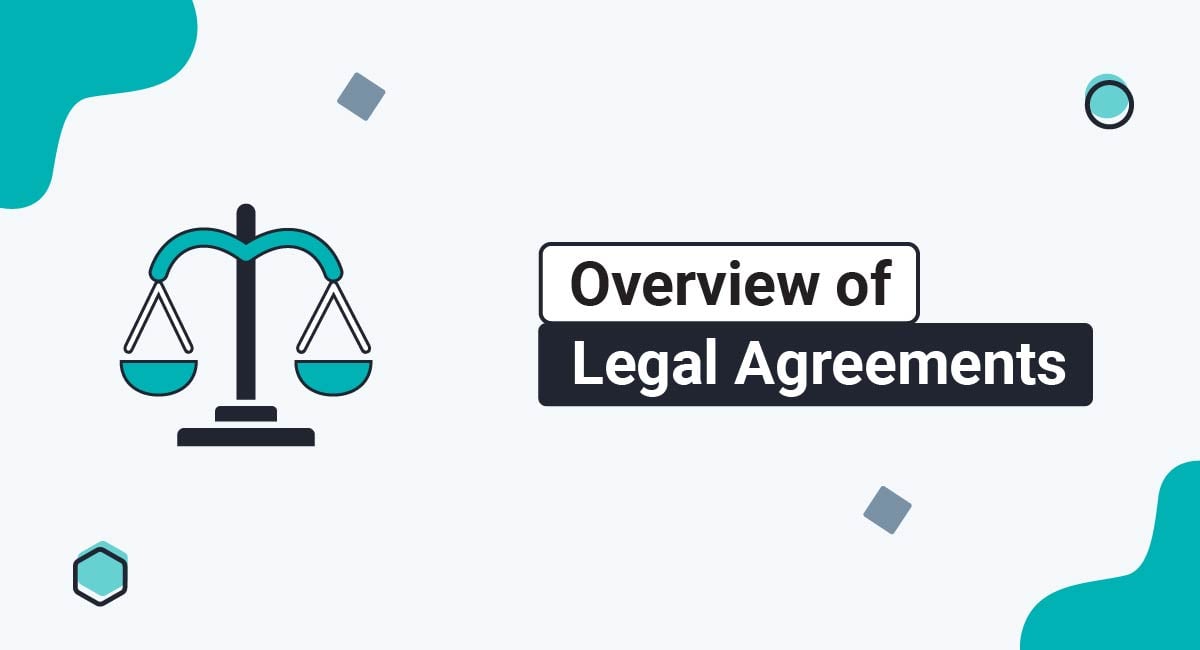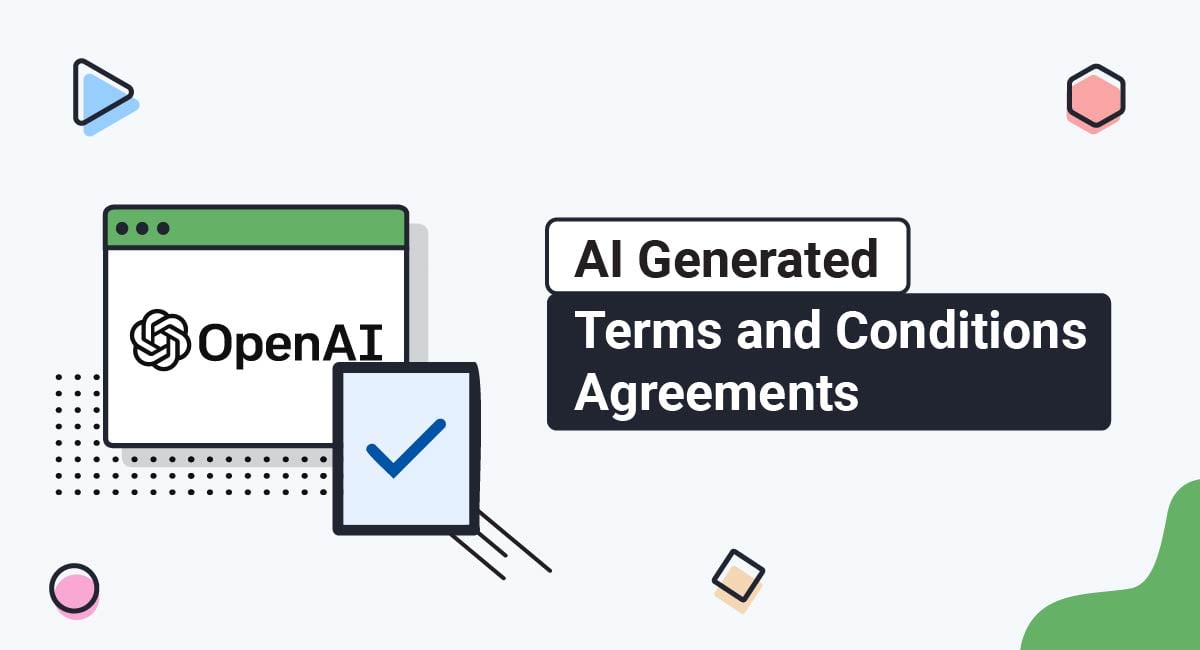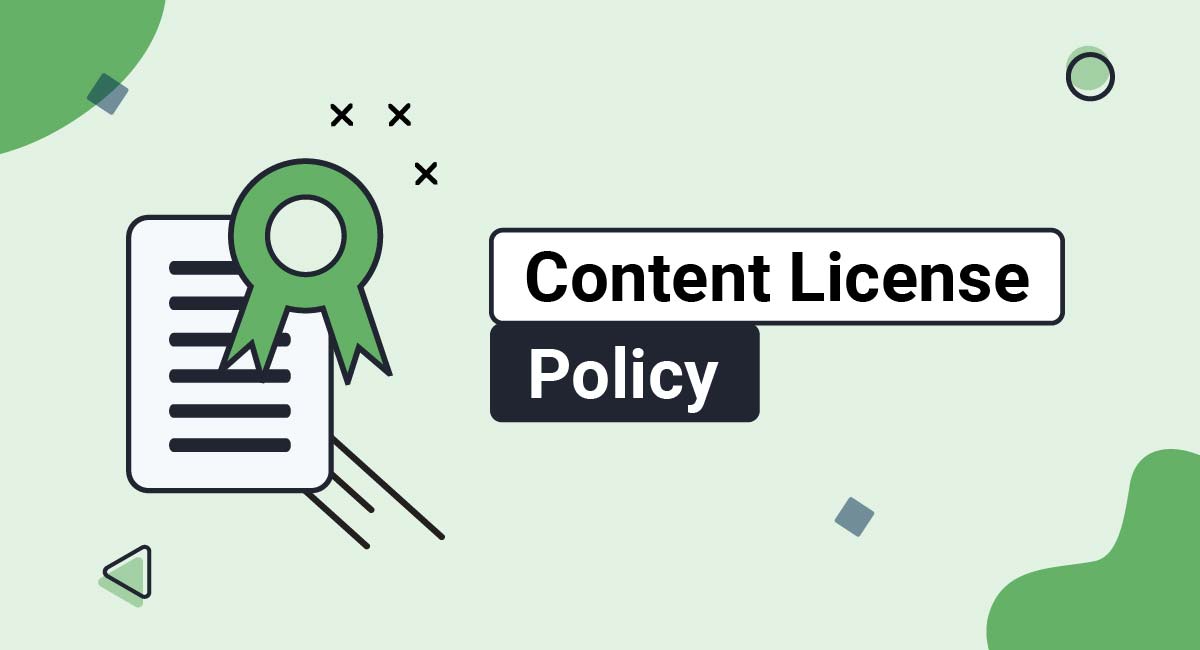Terms & Conditions Generator FAQs.
Questions about Terms & Conditions Generator before you sign-up? Find the most popular questions answered below.
A Terms and Conditions agreement (T&C) is an agreement that outlines and sets forth your rules and requirements for people who use your website or mobile app.
Topics addressed in a T&C include such things as acceptable behavior by users, restricted uses of your service and the maintenance of your rights, such as the right to terminate access to people who violate your rules. Users must agree to your Terms and Conditions for them to be enforceable.
Terms and Conditions agreements are also known as Terms of Service or Terms of Use agreements. The name doesn't matter, as they all serve the same purpose: Protecting your business and keeping your users informed.
Yes, the Terms & Conditions Generator from TermsFeed is free to use.
Our agreements and policies are free. We sell optional premium agreements with additional clauses (one-time fee) that can protect your business interests better.
Yes, the Terms & Conditions Generator from TermsFeed allows you to download the Terms & Conditions document as HTML, DOCX or Plain Text.
Use the Terms & Conditions Generator from TermsFeed to create a free Terms & Conditions agreement for your business.
Copying someone else's Terms & Conditions (T&C) agreement is illegal. Under copyright laws, legal agreements (including a Terms & Conditions agreement) are protected by copyright.
There are five main reasons why a Terms and Conditions is necessary:
Prevent abuses
A Terms & Conditions agreement will help you prevent abuses such as theft of your content, reverse-engineering of your app and spamming of your users. This is because your T&C will do two things.
First, it's where you list out what types of abuses you won't accept. Secondly, it's where you reserve your right to terminate or suspend users or accounts that engage in these abuses.
Protect content
As a business owner, you own the logo, content, and design of your website or app. A Terms & Conditions agreement informs users of this fact and prevents them from misappropriating any of your content.
You can also help protect your users' content in the same way.
Reserve right to terminate
You can maintain full control over your website or app by including a clause in your T&C that reserves your right to terminate accounts for any reason. Without this clause, you may face lawsuits if you shut down a user account, even with cause.
You've spent time, money and effort creating your platform, and your T&C will help you keep it from getting out of your control.
Limit liability
Your Terms & Conditions agreement limits the causes of actions your users may attempt to use against you. It does this by limiting liability for things like errors or inaccuracies in your information, damages caused by software issues, breaks in service or system shutdowns.
A T&C should always explain to users that they're assuming these risks when they sign up for an app, website or service and that the business cannot be held liable for any losses sustained in these events.
Notice of governing law
If your company is located in California, it's doubtful that you want to attend an arbitration proceeding in Singapore.
That's where a T&C clause on governing law comes in. You'll be able to state the jurisdiction your Terms and Conditions agreement falls under, and indicate where any dispute resolution must take place.
Unlike Privacy Policies, there are no laws that require you to have a Terms & Conditions agreement.
However, if you don't have one, you may lack the ability to enforce your rules and community guidelines, copyright protection, and be faced with other issues that could arise from the use of your website, software or app.
While you don't legally need one, you very much should want one.
Yes, you can write your own Terms & Conditions agreement. However, it's recommended that you rely on either legal partners (such as TermsFeed) or lawyers in order to write a Terms & Conditions agreement that is specific to your business.
A Terms and Conditions agreement can address any subject matter that affects the use of your website or mobile app, but some of the most common sections you'll find include the following:
- Payment terms for subscription services or purchases
- List of abuses and unacceptable activity that may lead to termination of accounts
- Community guidelines for forums or user generated content
- Copyright and trademark protection of your resources and any content uploaded on your website or app
Terms and Conditions agreements can vary. For example, a dating app will contain very different rules than one designed for photo sharing.
Because of the unique aspect of each business when it comes to T&C's, you will need to create your own Terms and Conditions agreement rather than borrowing one from another website or business.
These are all the same type of agreement. Terms of Service and Terms of Use indicate rules, limits, and protections just as much as Terms and Conditions. Only the names are different.
A Privacy Policy is used to inform users about how you collect, handle and use their personal information. In other words, it helps protect your users.
A Terms & Conditions agreement (T&C) is used to maintain more control over your website or app. In other words, it helps protect you as the business owner.
A T&C explains your rules, conditions of use, and other requirements regarding the use of your website or app. They provide information about topics like copyright protection, user-generated content, no tolerance policies against abuse and harassment, and how non-payment of subscription fees will be handled.
Another key difference is that while Privacy Policies are legally required, a Terms and Conditions agreement is not required under any laws.
However, having a Terms & Conditions agreement will help you enforce your rules and preserve a cause to terminate accounts if users violate your terms.
EULAs give users the right to use a copy of your software after they acquire it by way of a granted license.
A Terms & Conditions agreement is wider in scope and will dictate rules regarding the use of the software. You'll find a T&C agreement far more often, such as with ecommerce stores and personal blogs. EULAs are narrower in scope and seen less often, only with software, mobile apps and similar platforms or services.
Basically, an EULA grants users a license with limitations, and a T&C sets out the rest of the rules regarding the use of the software that don't necessarily have to do with the license.
Because laws require a Privacy Policy, and one that's easily accessible, you're better off separating these agreements.
While you can cross-reference each agreement by mentioning your T&C in your Privacy Policy and vice versa, you should never rely solely on your Terms & Conditions to present your Privacy Policy or you risk being out of compliance with privacy laws.
Your mobile app should definitely have a Terms & Conditions agreement. Mobile apps require rules of use as much as websites and software platforms do.
This is especially true if your app encourages interaction, shares content or contains a subscription service.
Your mobile app will reap all the same benefits your website will get from having a T&C in place.
If your product or service operates on both an app and a website, you do not necessarily need to draft separate Terms & Conditions agreements for each platform. You can usually just create one Terms & Conditions that applies to both.
In fact, having just one overarching T&C is recommended so you don't risk having inconsistent terms and or creating unnecessary confusion for your users.
Normally, an app and website are similar enough that one T&C can apply to both. But as always, there are exceptions.
Your T&C should be easily and freely accessible at any time. You should place a link to your Terms and Conditions agreement in the following places:
- Within your website footer. Adding a link here with your other important links is smart. Users know to look here, and it's accessible from every page of your website.
- When the relationship with your users gets formal. Because your T&C has the rules and guidelines for how people must interact with your website or app, it's a good idea to present it to your users at points like sign-up/create account forms, on checkout pages, in app store listings and when people first open your app. You should also request that users agree to your Terms and Conditions at these points so that your agreement will become legally enforceable.
For your T&C to be enforceable, you need to get your users to agree to it.
The best way to do this is with a clickwrap method, which means asking your users to click something to show they consent to your T&C. For example, when a user creates an account on your website, you can ask them to click a checkbox next to a statement that says, "I agree to be bound by these Terms and Conditions."
You can also ask them to click a button that says something like "I Agree" and is placed close to a statement that makes it clear that by clicking the button, they're agreeing to your T&C.
You should ask for agreement as soon as possible in your relationship with the users, such as when they open your app for the first time or create a user account on your website.












